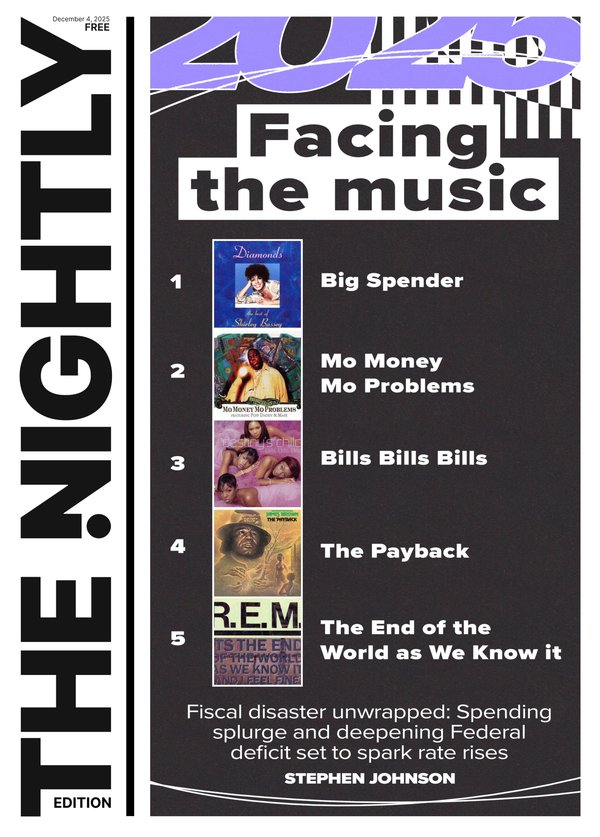Royal biographer Robert Hardman tells inside story of King Charles III’s emotional cancer diagnosis
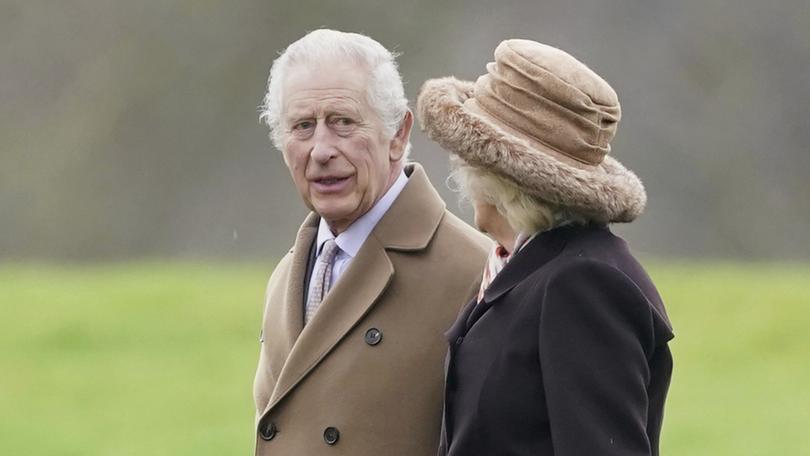
In this serialisation of the updated edition of Charles III: New King. New Court. The Inside Story, author Robert Hardman reveals the truth about the King’s battle with cancer and how it wasn’t his first cancer scare.
The Supreme Governor of the Church of England was spending Sunday morning in one of the very smallest places of worship in the entire Anglican firmament.
In good times and bad, as both Prince of Wales and now as King, Charles III likes to retreat to his “sanctuary”, his tiny chapel in the grounds of Highgrove, to gather his thoughts.
Sign up to The Nightly's newsletters.
Get the first look at the digital newspaper, curated daily stories and breaking headlines delivered to your inbox.
By continuing you agree to our Terms and Privacy Policy.On this particular weekend, there were a great many to gather.
“He was feeling his mortality,” says his old university friend, Lord Chartres, former Bishop of London, who had been invited to the King’s Gloucestershire home to celebrate Holy Communion with a congregation of just three: the King, the Queen and Lady Chartres.
Even if the tiny Hobbit-style refuge had been able to accommodate more that day, they would not have been welcome.
It was February 25 this year, just three weeks since the King had received a diagnosis of cancer.
With his treatment still in the early stages, his doctors wanted the risk of infection kept to a minimum. That meant no crowds.
The King was not consumed with despair, however. Anything but.
“A diagnosis of cancer means that you enjoy things more, relish things more,” Richard Chartres explains, adding that the monarch had been “energised” by the “tremendous” outpouring of public affection.
He was certainly not praying for some sort of miracle, Chartres reveals.
“Quite a lot of religion is bargaining with God: ‘You do this and I’ll continue to pay attention to you’ and so on,” he says.
“The King doesn’t have that sort of relationship.”
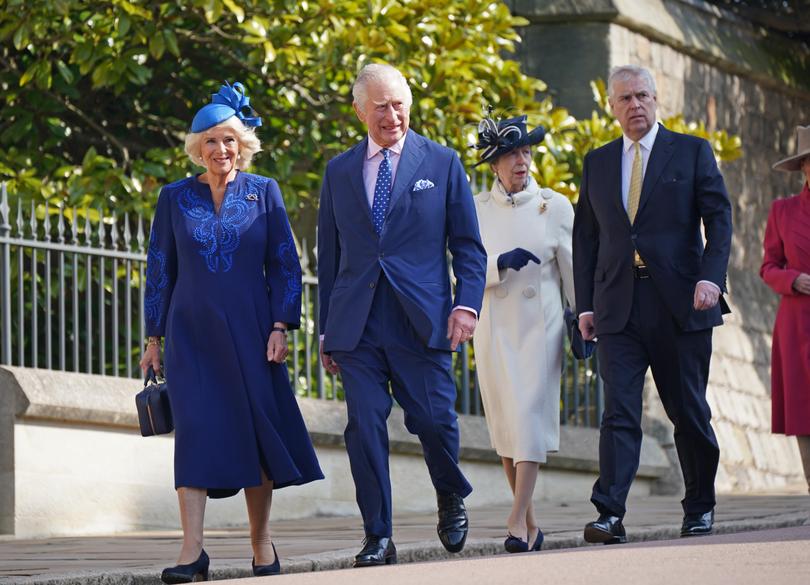
After Communion, the two men went for a walk in the garden. Chartres felt this was a moment to offer some well-meaning advice: slow down a bit.
“But I don’t really believe that he took any notice,” he says.
“He is frustrated. He has begun to inhabit the role for which he was preparing for so long and that has released all sorts of things in him, while he is still very understandably concerned about the maintenance and continuation of things he loves.”
The first intimation of the King’s ill health had come around six weeks earlier, on January 17, with an announcement that he had “sought treatment for an enlarged prostate”.
No previous bulletin on the health of a sovereign had ever been quite so frank.
George VI’s cancer was so wreathed in euphemisms that even he was not fully aware of his own condition.
The late Queen took the view that medical matters should only be made public if she was either in hospital or forced to miss engagements.
Even then, details were to be used sparingly.
One member of staff recalls her being “quite cross” when the Palace issued a statement on a 2013 hospital admission.
Given that it was her first overnight stay in ten years, there was legitimate public interest.
However, she was unhappy that the Palace had gone as far as stating that she was “experiencing symptoms of gastroenteritis”.
So the appearance of a phrase like “enlarged prostate” in a Palace bulletin was another small but significant indication of the tonal shift in royal communications following the change of reign.
“The King and Clive [private secretary Sir Clive Alderton] thought carefully about how open he was going to be. They agreed very quickly that it would make sense to be open, though, of course, this is a house that hasn’t traditionally done that.
“So this was definitely a “change point” in that regard,” says a senior member of staff.
The King’s candour was driven, primarily, by medical data.
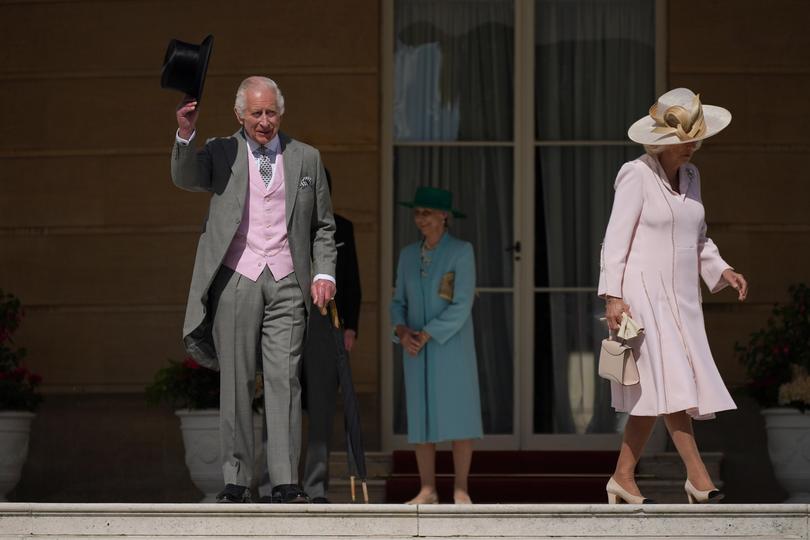
“We looked up the number of people who suffered from this and it’s something that affects so many men over 60. The King wanted to encourage other men to seek treatment.”
His plan had the desired effect. On the day of the royal announcement, the National Health Service reported a 1061 per cent upswing in visits to its web pages on prostate problems.
On January 26, the King was admitted to the same hospital as the Princess of Wales for his “corrective procedure”, dropping in on his daughter-in-law’s room to check on her progress.
Both were released three days later, their departures indicative of their respective approaches to their illnesses.
The King, accompanied by the Queen, left through the front in the State Bentley — designed for optimum visibility — waving cheerfully at onlookers.
The Princess left unobserved through a back door.
The two royal patients then returned home — the King to Sandringham, the Princess to Adelaide Cottage at Windsor — to convalesce.
The rest of the family, meanwhile, started to resume regular engagements.
This contented sense of royal business-as-usual only added to the feeling of genuine shock on February 5, when the early evening news bulletins opened with a sombre statement from Buckingham Palace: the King was undergoing treatment for cancer.
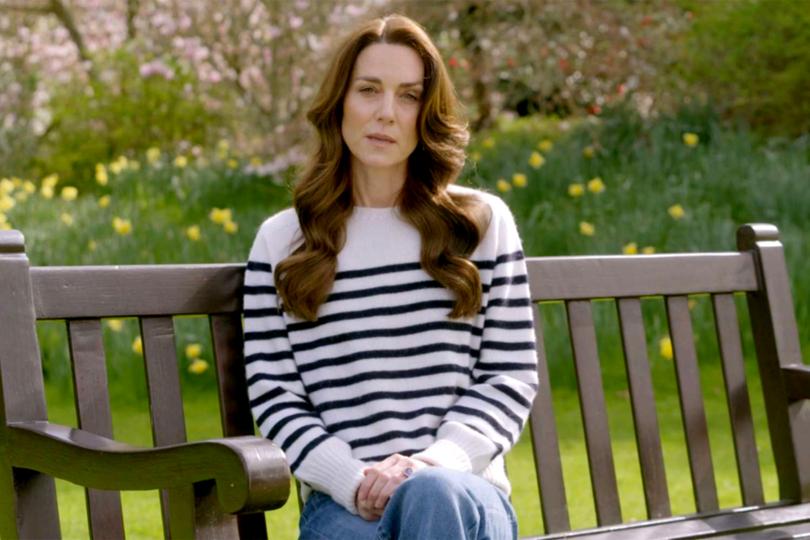
During his procedure for what had been that “benign” prostate enlargement, a “separate issue of concern was noted”.
This revealed a form of cancer. A schedule of regular treatment, the statement said, was already under way, adding that the King wanted to share his diagnosis not only to head off speculation but also to “assist public understanding for all those around the world who are affected by cancer”.
Says a senior aide: “Cancer is a very scary word if you’re a king or anyone else. It’s a big shock. But he is a great one for taking things on the chin and then saying, ‘Right. How are we going to get on with this?’
“He was very clear that he would carry on doing all of the constitutional stuff in exactly the way that he did before.”
Besides, one former member of the team from his Prince of Wales days reveals that the King had actually undergone a cancer scare some years before.
Given his close involvement over the decades, as prince, with several cancer organisations and charities, here was a patient with a deeper understanding of the disease than most.
As for announcing the news of the King’s condition, there had been very little internal debate.
“After the earlier announcement about his prostate, it was actually an easy decision to say, ‘Well, that’s what we do these days’,” says a member of the King’s staff.
“We didn’t hang about because we all felt that the country does have a right to know about this — though not in forensic detail.”
The world would, therefore, learn that the King had cancer, but not the type or location, beyond confirmation that it was not prostate cancer.
“When you know the King has got cancer, every cancer sufferer could feel connected to him,” says the staffer.
“If we said exactly what it is, others with a different diagnosis might feel less connected.
“And if part of the point here is for him to be sharing his story, then it is better to be, if not all things to all people, then as many things to as many people as you can be.”
Non-disclosure is likely to remain the official position for years to come.
What gave the King a particular boost, say insiders, was the public response.
He had received plenty of goodwill messages upon his accession and, again, at the time of his Coronation.
His diagnosis, however, prompted a very different — and often very emotional — response, on another scale.
Welcoming then prime minister Rishi Sunak for his audience, the King told him: “I’ve had so many wonderful messages and cards. It’s reduced me to tears most of the time.”
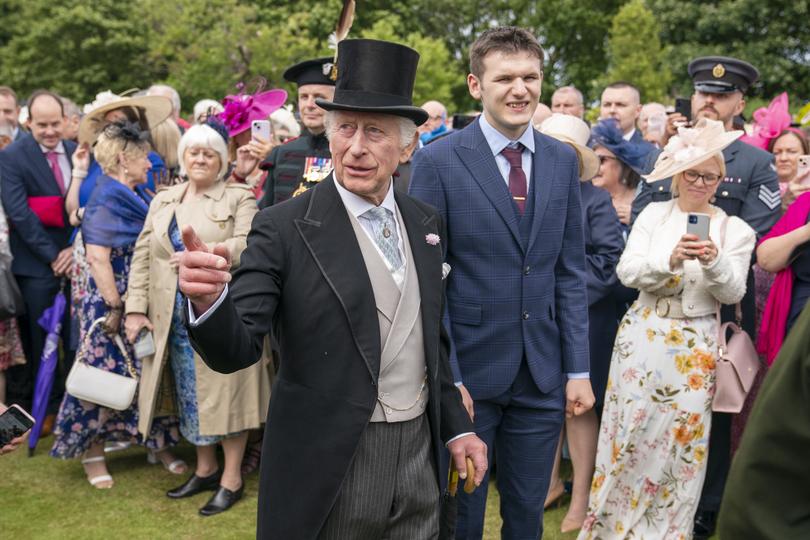
His friends and staff had seen that for themselves. “That was not hyperbole,” says a senior aide.
“There were sackloads, literally, and it really moved him. Because it’s one thing to hear applause when, say, you are out and about on an engagement, but it’s another to see the scale of the support and affection for a man with a critical illness.
“And people wrote the most lovely messages, children too. We had a lot of glitter — and a lot of Smarties.”
The monarch was delighted when his doctors told him that he could, finally, resume meeting members of the public on Easter Day.
It would be a controlled situation outside St George’s Chapel, Windsor.
Yet here was a crucial first step back towards doing what royalty does on a daily basis.
After the traditional service of Easter morning matins, the King and Queen emerged from the Galilee Porch and walked across to the waiting crowds.
“Keep going strong, Your Majesty,” one man told him. “Never give in.”
“I have to obey my instructions,” the King joked.
At the end of a dreadful first quarter of 2024, the outlook was — very slowly — starting to improve.
Step by small step, the monarchy was continuing its subtle recalibration under Charles III.
No one had been paying much attention to that side of things, with so many worrying royal distractions, but the King was determined to maintain the institution’s forward motion.
On May 15, 2024, he hosted a Palace garden party.
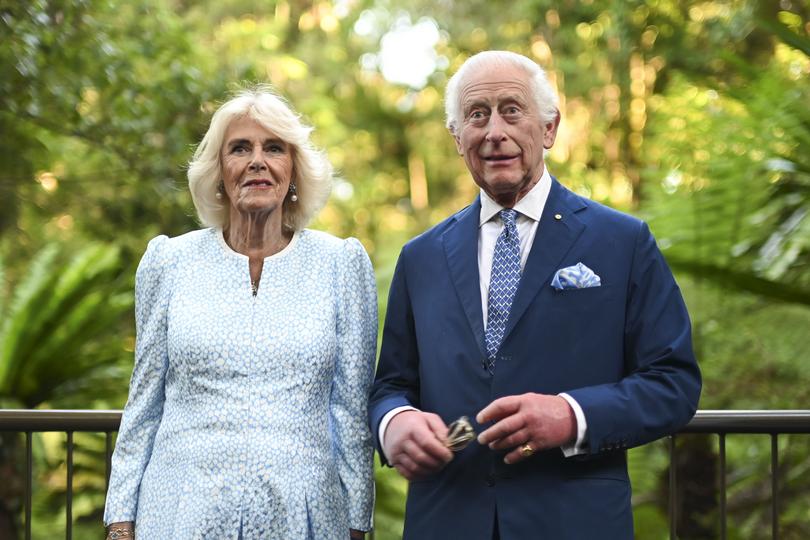
The cut of the sandwiches, like the scones and the sound of the military band above the clink of teacups, was timeless enough.
Yet the guest list for this party had, for the first time, been drawn up by a government department.
“Ever since his accession, the King has been thinking about continuity and change,” says a senior member of the royal household.
“The continuity bit is easy to do if you pay attention to the constitutional stuff, as the late Queen always did.
“But he spends a lot of time thinking about the change bit; what would be a reasonable way for the institution to reinvent itself, without getting too far out in front?”
One innovation had been to work more closely with the Government to lend some royal stardust to ministerial events.
Now he was going one step further by reinventing a traditional royal event in tandem with his ministers.
Hence, this garden party on the Buckingham Palace lawn. Usually, invitations to garden parties are distributed through the time-honoured network of Lord-Lieutenants, the Armed Forces and royal charities.
This one had been devised by the Department for Culture, Media and Sport as a celebration of Britain’s ‘creative industries’, collectively worth an annual £124 billion to the economy.
The (then) secretary of state, Lucy Frazer, had originally talked to the King’s team about seeking royal support for a smaller event like a reception.
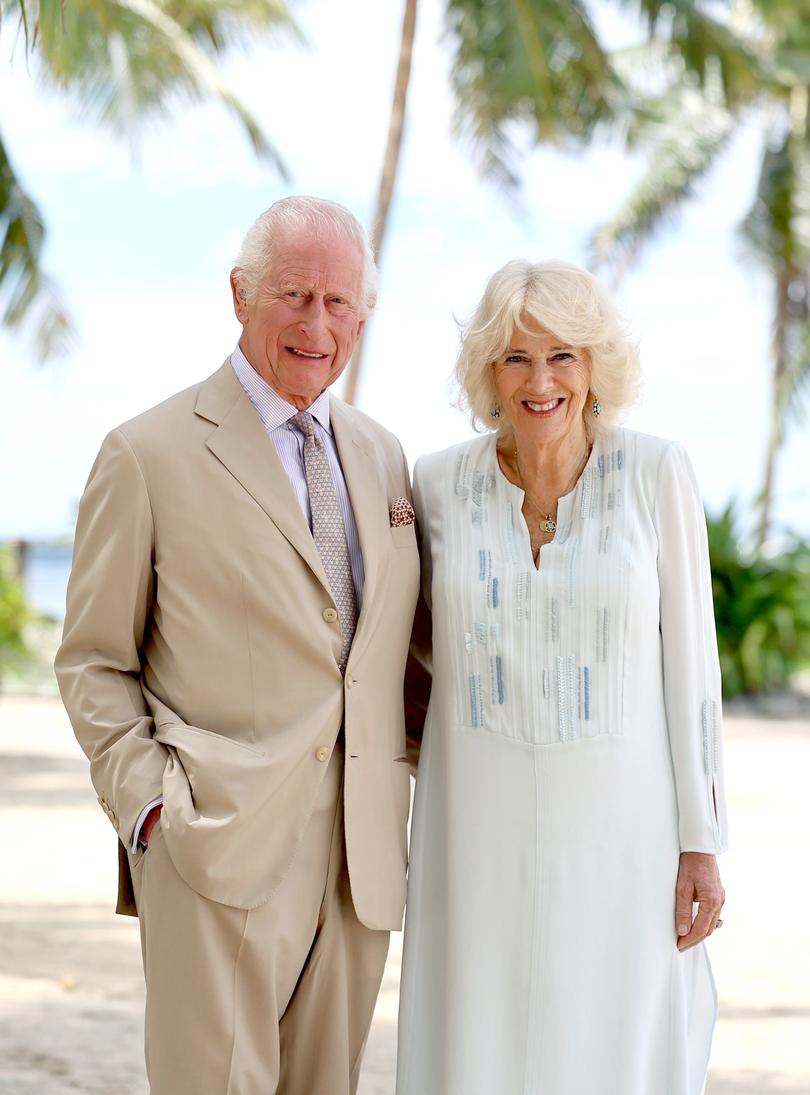
When the proposal reached the King, he saw no reason to keep it small.
“He took it one step further,” Frazer told me.
The result was a garden party for 4000 people, from actors and film directors to technicians and regional floor managers.
This event was on top of the traditional round of garden parties which the Palace stages each summer.
In other words, the King was not merely maintaining standards, but extending the royal repertoire.
Supported by the Queen, the Duke of Edinburgh and the Duchess of Gloucester, he spent the best part of two hours working his way across the lawn and back.
“Once again, it’s about ‘sweating the assets’. It’s about making the most of these buildings,” says a member of staff.
It was a learning experience, too, not least when the King was introduced to Maya Jama, presenter of ITV’s Love Island.
“It’s a reality dating show,” she told him, adding that she was “about to go to Spain to film some young people snog”.
“There’s one born every minute!” the King replied.
Sharp-eyed regulars at official events have noticed a few other Charles III innovations, too.
At state banquets, for example, there has been a trimming of the menu — down from four courses to three.
For much of the reign of Elizabeth II, these occasions had involved five courses, until she decided to save 20 minutes’ time by dispensing with the soup.
For a Japanese state visit in June this year, Charles III had decided to go one further and remove “dessert”; not the pudding element (in this case, ice cream and peach sorbet), but the traditional fourth course of fruit.
This always included a favourite setpiece of the royal kitchens: pineapples with the fruit hollowed out, cut into pieces and reinserted, ready to be scooped out by the guests.
The cancer experience has unquestionably altered the King’s priorities for his reign.
“I think it’s safe to say you can add a fifth ‘C’ to his list,” says one senior member of staff, referring to his ‘Four Cs’ blueprint: communities, Commonwealth, climate and culture.
Previously a very active and knowledgeable patron in the field of cancer care and research, the monarch sees it as a subject on which he and a vast number of his subjects are as one.
Other issues will continue to land unexpectedly.
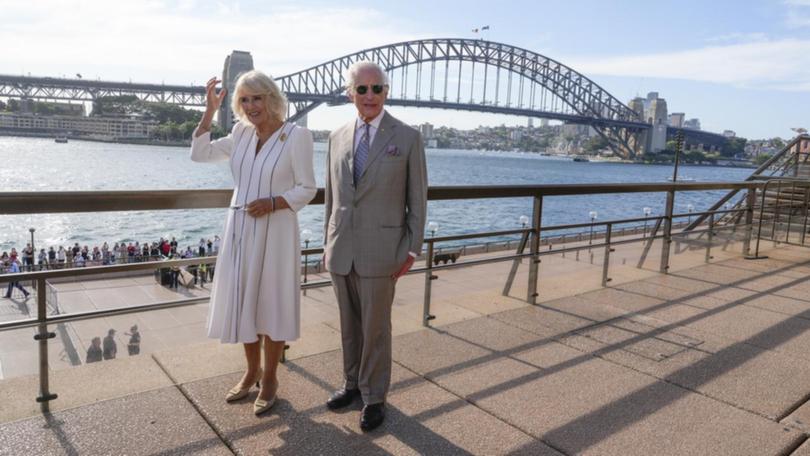
Difficult Commonwealth issues will persist within an organisation in which some member states lean more closely to Russia, China and Iran than Britain and NATO, while the legacy of the imperial past remains a live issue.
The King can do little with regard to any of this beyond fostering unity and highlighting common ground, like the late Queen.
The year 2024 will certainly go down as one of the most challenging in modern royal times and for reasons beyond the monarchy’s control.
What the King really felt in those dark moments after the discovery of his cancer, and then that of the Princess, will not be known until future historians open the diary of Charles III.
But, despite so much turbulence overseas and change at home, despite all the fears and uncertainty within the monarchy itself in early 2024, the House of Windsor remained, to most people, a source of constancy in a troubled world.
“The interest in the royal family over the past year around the world shows that there are very few people with that international capacity to communicate, except perhaps for the Pope,” says Lord Chartres.
“That is not a trivial fact. I think the reputation of the monarchy over the past year has been vastly enhanced.”
The King’s former communications secretary, Julian Payne, agrees, pointing out that little has changed since a 2021 report by the US data firm, Statista, which rated the British monarchy as the world’s fifth strongest brand after Facebook, Amazon, Google and Apple.
In the case of the monarchy, adds Payne, it is a brand with a communications operation comprising around a dozen people but “a boss with a thousand years of history behind him”.
And he believes that the events of 2024, for all the worry they have caused, have entrenched public support.
“People could see the King come and go during his illness and looking happy. That transparency has been so important,” says Payne.
“They had already accepted him as a head of state. Then they start to see him on his way to hospital or looking at his cards and they think about a family member with cancer. It opens up a deeper, emotional connection.”
Those who feared that the King’s cancer might presage a return to what some once called the ‘Eeyorish’ moods of his middle years were happy to be proved wrong.
“There has been nothing Eeyorish since his diagnosis,” says a close friend.
“Being King is a suit that fits him well. There is a sense of fragility now, of course, which is sensible, but he is in good spirits.”
That sense of fragility had been felt all the more keenly in June when news broke that the Princess Royal had been hospitalised after sustaining a head injury at her Gloucestershire home.
Details remained sketchy as the then 73-year-old Princess had no recollection of the incident herself, although it was said to be horse-related.
Fortunately, this essential member of the royal team was back on duty a fortnight later (at an equestrian engagement, needless to say).
“She is indomitable,” reflected one of the King’s staff, as relieved as everyone else.
The Prince and Princess of Wales took to X: “Super trooper! So great to see you back so soon! W & C x.”
It was the following Sunday that the Princess of Wales made a happy return to the public stage, presenting the men’s singles trophy in front of a thrilled, if emotional, crowd on Wimbledon’s Centre Court.
On the very same afternoon, the Prince was in Berlin to see England lose the men’s Euro 24 football final.
That evening, the King had warm words of praise for the defeated squad.
Here was a textbook example of a small, joined-up royal family playing a full part in the highs and lows of national life in a way that no one else could replicate.
The recent run of royal reverses has been bewildering and, at times, alarming.
Yet the royal family’s stoicism, together with deep, unwavering public goodwill, has meant that these personal challenges have not descended into a full-blown crisis.
Even so, they have certainly reminded the country that it should not take its monarchy for granted.
